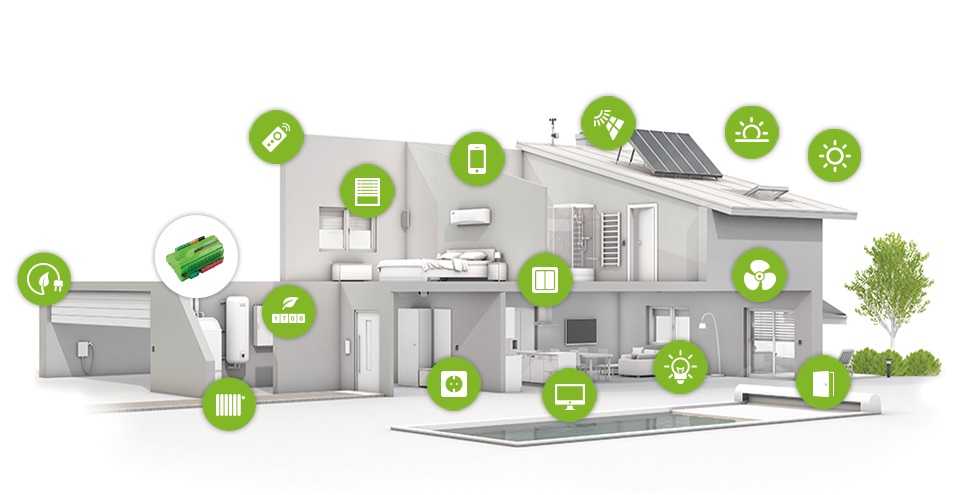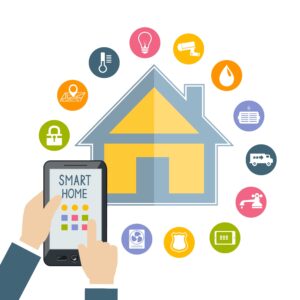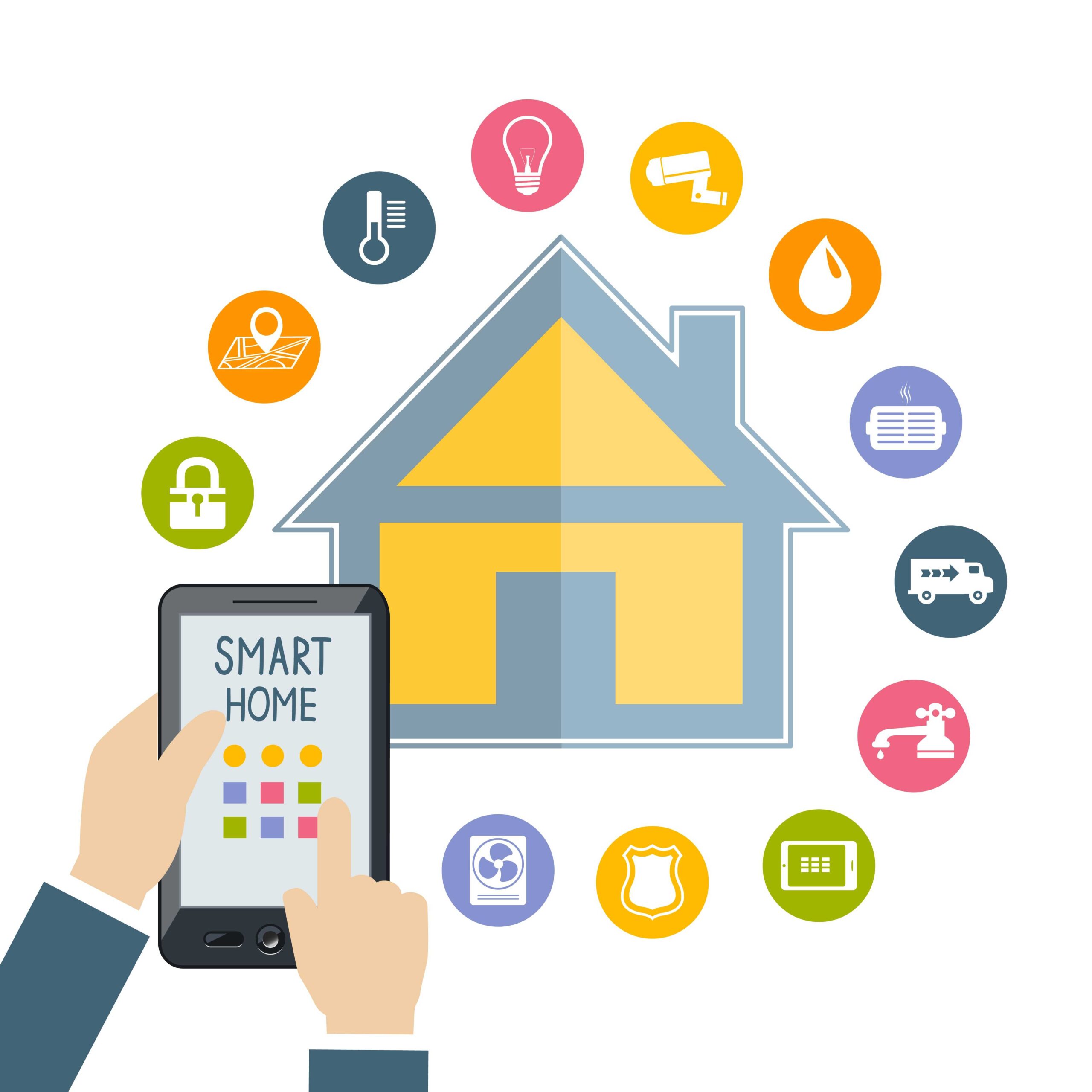What is a smart house? How much does it cost? And how can we actually achieve it?
These are three big questions that deserve quick and clear answers — especially in today’s world of intelligent devices and connected living.
What many people don’t realize is that home automation isn’t a new concept at all. The idea has been around for decades — it’s just that the technology has finally caught up with the vision.
In this article, I’ll walk you through the foundations of home automation, explain what a smart house really means, and explore how this once-futuristic idea is becoming a part of everyday life.
Smart House – Part 1 – Introduction and History
For a long time, home automation was purely science fiction — a futuristic dream of intelligent homes that could think and act on their own. But the first real sign of smart control came as early as 1898, when Nikola Tesla unveiled a wireless remote control that used radio waves to steer a miniature boat. It was revolutionary, but far from mainstream.
The real momentum began in the early 20th century with a boom in domestic appliances. The first engine-powered vacuum cleaner appeared in 1901, followed by the electric vacuum cleaner just six years later. Over the next two decades, a wave of innovations brought refrigerators, clothes dryers, washing machines, irons, and toasters into homes — though at first, only the wealthy could afford them due to their high cost.
By the 1930s, engineers were experimenting with the idea of automating home functions. But it wasn’t until 1966 that real progress was made. That year, Jim Sutherland developed the first true Home Automation System, known as “Echo IV”. It could control room temperature, manage shopping lists, and even switch appliances on and off.
Another notable attempt came in 1969 with the Honeywell Kitchen Computer — a device designed to generate recipes. However, it was far too expensive to succeed commercially.
The real breakthrough came with the invention of the microprocessor in 1971, which drastically lowered the cost of electronics and brought computing power into the hands of everyday consumers.
The term “Smart House” was first coined in 1984 by the American Association of House Builders, signaling a growing interest in intelligent living spaces. In the early 1990s, a new focus emerged on combining gerontology and technology — giving rise to gerontechnology, aimed at improving the lives of elderly people through automation.
By the late 1990s, smart devices were appearing in the form of appliance-computer hybrids and early robotics — a field that came to be known as domotics (from “domus,” Latin for “home”). Despite the excitement, these technologies were still expensive and largely reserved for the wealthy.
In 1998, a major step forward came with the opening of the Integer Millennium House in Watford, UK — a demonstration project that showcased how home automation could control everything from heating and lighting to garden irrigation, security systems, and door access.
As technology advanced and prices dropped, smart home features began making their way into everyday households. Increased demand led to more investment, better efficiency, and wider accessibility — finally bringing the dream of smart living into reach for regular people.
Smart house in the present

Today, home automation is almost everywhere — but most of the time, we don’t even realize it. That’s because it’s become so natural, so seamlessly integrated into daily life, that we hardly notice it anymore.
We can now control our TVs, heating systems, lighting, alarms, and even doors — all from our smartphones or voice assistants. What once seemed futuristic is now standard in modern homes.
Nearly every major home appliance — from refrigerators and washing machines to ovens and air conditioners — now comes with built-in Wi-Fi connectivity. Manufacturers proudly label them as “smart devices” because they can interconnect, communicate, and often respond to remote commands or automation routines.
And much of this smart revolution has been made possible thanks to Asia’s electronics industry, which continues to produce smaller, more efficient, and affordable integrated components year after year — making smart technology more accessible to everyone.
But how do we actually define a smart house?
Has home automation already reached its peak?
What more could we possibly ask for?
Well, when it comes to technology, I can confidently say — we haven’t reached the edge of anything yet. And we probably won’t anytime soon.
In my opinion, “smart” isn’t a fixed standard — it’s something each of us defines for ourselves.
What seems smart to me might not feel smart to you. Why? Because we all have different needs, different lifestyles, and of course, different budgets. Our personal environments shape how we interact with technology — and how we expect it to help us.
That said, let me share what I believe a smart house should be able to do — and I’m talking about the house itself, not just the appliances.
Smart house benefits

🟩 1. Monitoring
A smart house should allow you to monitor its status in real time or view historical data — from anywhere in the world. It should provide live stats and insights into critical systems such as:
-
Energy consumption
-
Water usage
-
Temperature and humidity
-
Heating system status
-
Security alerts
-
Proximity detection
-
People presence and movement tracking
All this data should be accessible through a cross-platform software dashboard, capable of delivering detailed statistics, trends, and even automated recommendations. Ideally, the system would also compare your home’s performance anonymously with others in a centralized, privacy-respecting database, helping you identify improvements based on real-world benchmarks.
🟩 2. Controlling
Many people think remote control is the most important feature of a smart house — but I believe that’s a misconception.
When you manually control a system, you’re essentially overriding its intelligence. True automation means the system should operate independently, based on conditions and learned behavior. Manual control should exist, yes — but only as a backup, not the default.
Controlling your smart house should feel more like intervening during exceptions rather than micromanaging everyday tasks.
🟩 3. Efficiency
A smart home should be inherently more efficient than a regular house. The goal is not just convenience — it’s sustainability.
That starts with low energy consumption. A smart home should have a centralized energy process manager that constantly monitors both internal and external sensors, adjusting systems like heating, lighting, and ventilation accordingly.
Think about self-driving cars — their true potential only emerges when all vehicles communicate with each other. The same applies to homes. If smart houses could exchange performance data, the collective intelligence could help each one run better.
For example, if your home includes solar panels or a battery storage system, the smart core should know when to store, distribute, or conserve energy — based on occupancy, current load, and even weather forecasts.
🟩 4. Intelligence
This is the heart of the smart house — and also the hardest part to achieve.
Here’s what real home intelligence looks like from my perspective:
-
The house should know how many people are inside, and in which rooms.
This matters for managing lights, heating, security, and more. It can be done with proximity sensors, motion detectors, and door contact counters. -
It should be able to turn off lights, TVs, and climate control in empty rooms, recognize long absences (like vacations), and adapt automatically.
-
The house must be connected to the internet — not just for remote access, but to pull real-time weather data, compare it with local sensor readings, and make preemptive adjustments to temperature and energy use.
-
A smart house should talk to you.
It should notify you of potential issues or helpful suggestions — like:“You left the front door open and no one’s home,”
“There’s a big temperature difference between the living room and the bedroom,” or
“You haven’t opened the windows in three days — consider refreshing the air.” -
And yes — you should be able to talk to it.
I’d love to be able to tell my house:“I’ll be home in one hour.”
And have it respond by preparing the temperature, refreshing the air, arming security, and maybe even starting the coffee maker or turning on the TV.
🟩 5. Interconnectivity
Lastly, a smart house should be able to communicate with all its smart devices and appliances — but this is still a huge weak point in the current market.
Despite most modern devices coming with Wi-Fi, there’s often no common language. No universal protocol. A smart TV that streams YouTube or a fridge that keeps a shopping list? That’s not smart — those are just gimmicks.
For real smart home integration, manufacturers should provide open APIs and clear control protocols. That way, all devices can be integrated into a centralized system, controlled intelligently and on demand.
Until then, most of what’s marketed as “smart” is just flashy — not functional.
Until the big companies will start producing really smart appliances and electronics that can talk to each other and offer ready to use gates for controlling, we are still restricted to use independent controllers and make use of blind power switches. In the second part we will get into how to make your house smarter using Internet of Things, low budget hardware and free open source platforms. Before that, you may be interested in the following articles:
- ESP8266 Arduino tutorial – WiFi module complete review
- Temperature sensor comparison – DHT22 vs DS18B20 | Arduino tutorial
- MQ4 Gas Sensor – Methane Natural Gas monitor with MQ3 / MQ4 sensors
I kindly recommend you the following great learning materials if you want to find more about home automation:
- Amazon Echo: 2016 User Guide to make your home life easier
- Automate your home using the powerful Arduino platform
- Z-Wave Basics: Remote control in Smart Homes
Hoping that this article inspired you, i kindly invite you share this article, subscribe my YouTube channel and join the communities on social networks. Feel free to comment or send suggestions / remarks so i can improve the content quality.

